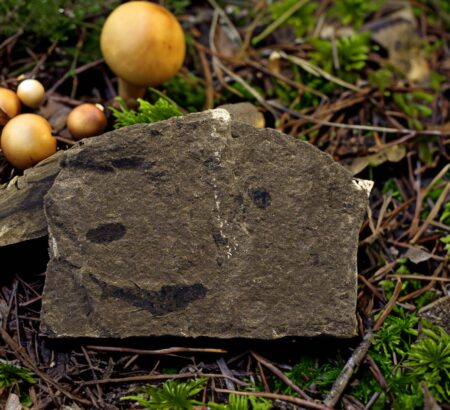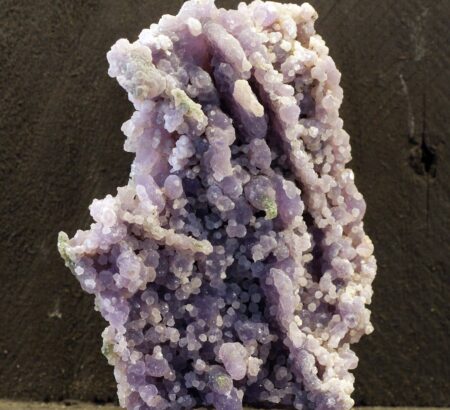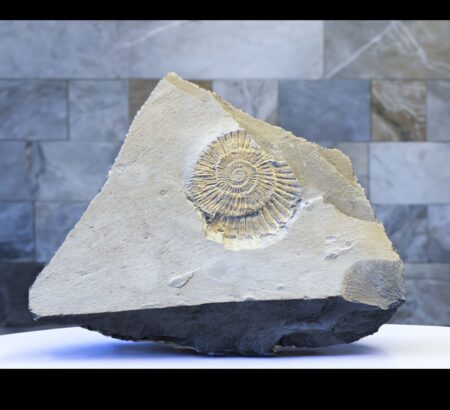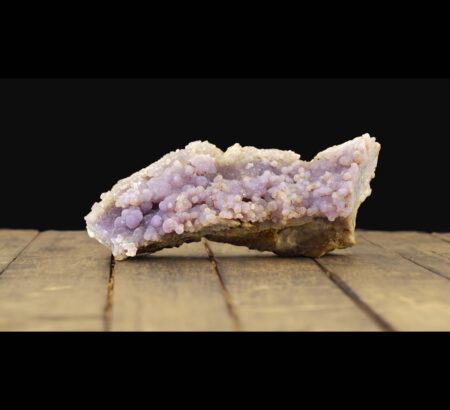Description
Harpoceras Ammonite Germany
The Lower Jurassic quarries near Holzmaden, Germany, are a paleontological treasure trove, known for their exceptionally well-preserved fossils. The quarries are located in the state of Baden-Württemberg and have been exploited since the 19th century for their fine-grained, black shale, which is used for roofing, flooring, and other construction purposes.
What makes the Holzmaden quarries so special is the abundance and quality of the fossils they contain. The shale layers date back to the Toarcian age (180-175 million years ago) and have preserved a variety of marine animals, including fish, ichthyosaurs, plesiosaurs, belemnites, and most famously, ammonites.
Harpoceras
Harpoceras ammonite from Holzmaden is a well-known and highly sought after fossil among collectors and paleontologists. Holzmaden is a small town located in the Baden-Württemberg region of Germany that is known for its abundance of well-preserved fossils, including the Harpoceras ammonite.
The Harpoceras ammonite is a type of cephalopod that lived during the Jurassic period, around 200-145 million years ago. They are characterized by their distinctive coiled shell, which resembles a tightly wound spiral staircase. These shells could grow up to 8 inches in diameter and were divided into multiple chambers that the ammonite would inhabit over the course of its lifespan.
One of the unique features of the Harpoceras ammonite is its distinctively sharp keel, which runs along the outer edge of the shell. This keel likely served as a means of defense against predators, such as prehistoric marine reptiles, by making it more difficult for them to grab onto and crush the ammonite’s shell.
Ammonites Harpoceras Ammonite Germany Ammonite Germany ammonite dactylioceras germany
Ammonites were a group of marine animals that lived during the Mesozoic Era, about 240 to 65 million years ago. They had a coiled, spiral-shaped shell with ridges and a series of partitions called septa. This shell could range in size from less than an inch to over six feet in diameter.
Ammonites were closely related to modern-day squids and octopuses, and they likely fed on small fish and squid-like animals with their sharp, beak-like mouthparts.
One unique aspect of ammonites is their septa, which formed chambers within the shell. As the animal grew, it would add a new chamber and seal off the previous one with a septum. This gave the shell its distinctive spiral pattern and allowed scientists to study the growth patterns of ammonites.
Ammonites were highly successful and diverse during the Mesozoic Era, with fossils found all around the world. However, they died out at the end of the Cretaceous period, along with the dinosaurs. There are several theories about why this happened, including climate change, competition with other animals, and a meteor impact.
Additional information
| Weight | 0,1 kg |
|---|---|
| Dimensions | 6 × 6 × 1 cm |







Reviews
There are no reviews yet.